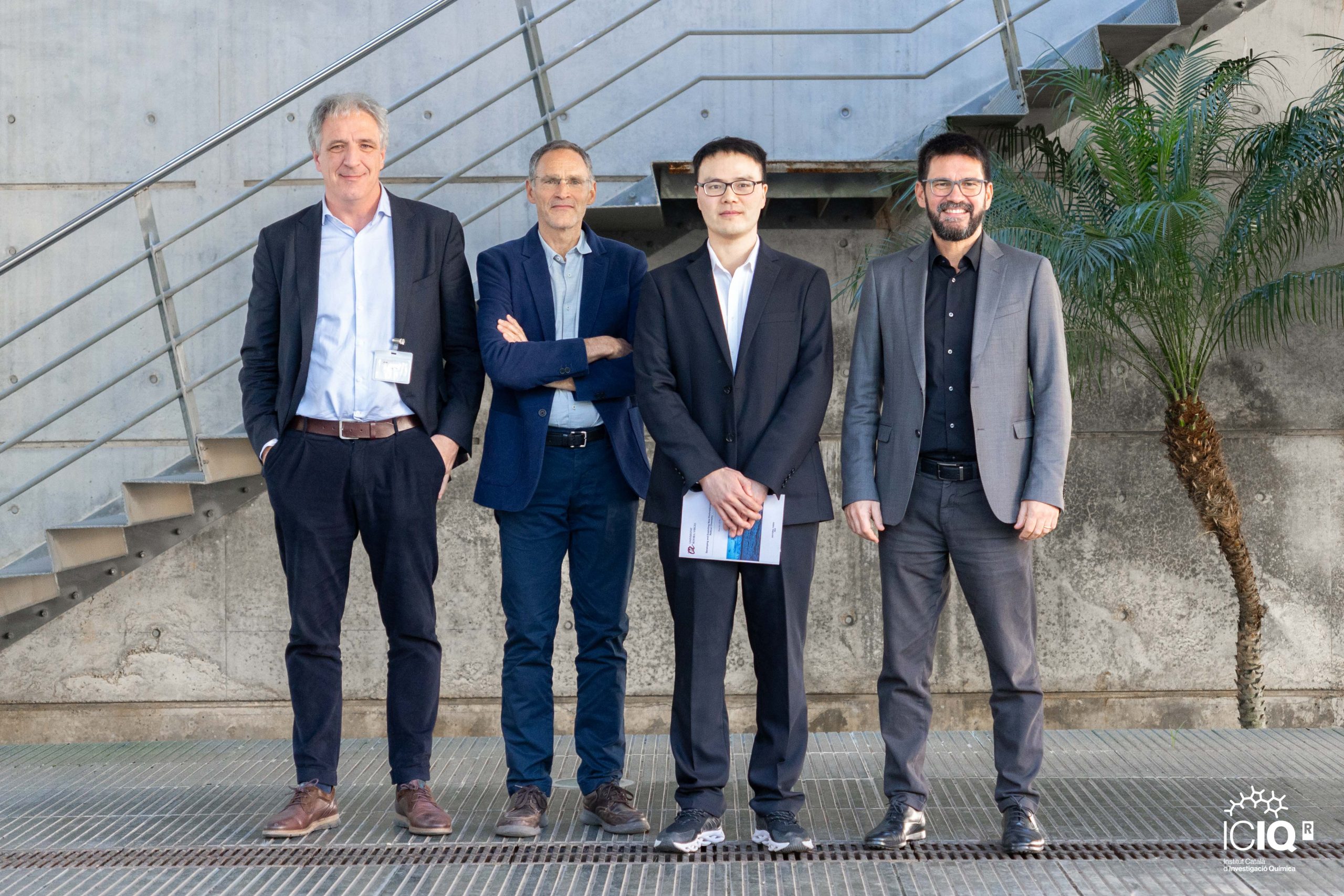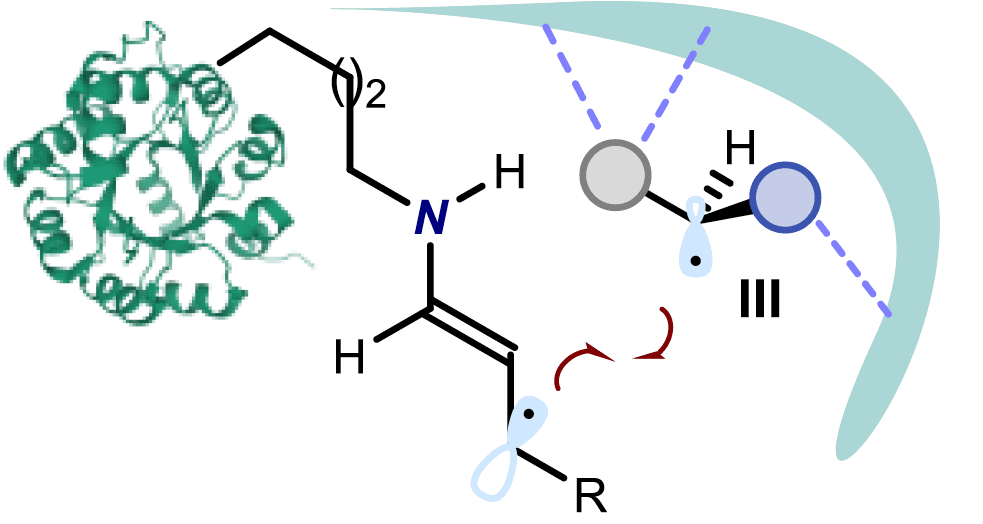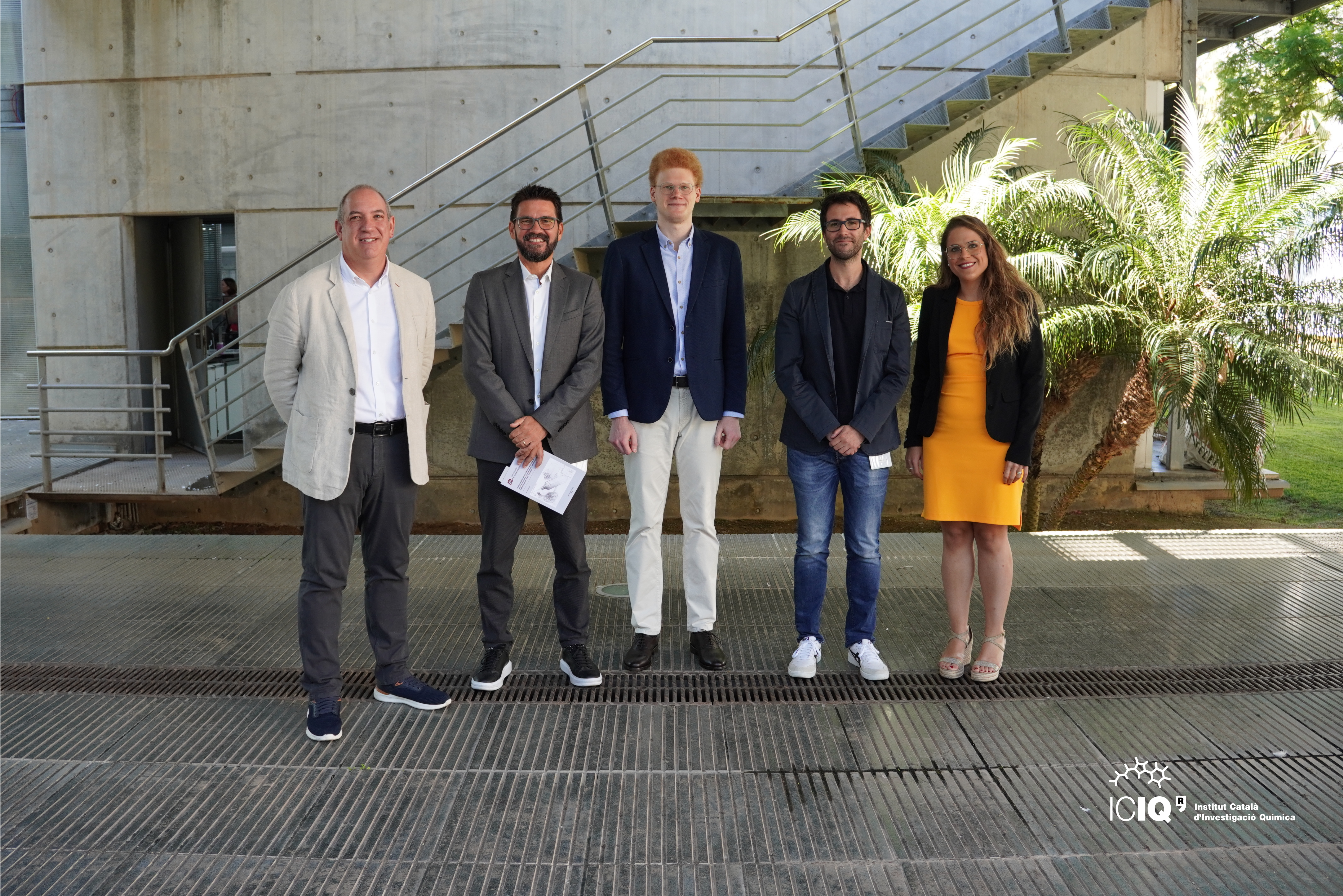Photocatalysis without a photocatalyst
20th October 2017 -
Prof. Melchiorre’s lab develops a new photocatalytic process for the formation of carbon–carbon bonds.
1,4-dihydroxipyridine derivatives (DHPs) are light-sensitive compounds and can be transformed into strong photo-reductants. Hence, Prof. Melchiorre and his team wondered if their structural analogues alkyl-DHPs would have a similar behaviour. In their last paper, they demonstrate this can actually be done, and explore the rich possibilities of visible light-activated alkyl-DHPs in organic chemistry.
When illuminated with violet (405 nm) light, alkyl-DHPs form an excited state that is both a photo-reductant and a radical source. Melchiorre and co-workers observed the products that formed upon irradiation of benzyl-DHP were toluene and 1,2-diphenylethane. This was a clear indication of the formation of benzyl radicals, which was supported by further EPR studies that demonstrated the presence of the aforementioned radical species. To prove the versatility of their discovery, ICIQ researchers studied the application of benzyl-DHP in the ipso-substitution of cyanoarenes.
Once they verified the effectivity of this methodology, Prof. Melchiorre’s team decided to exploit this unique reactivity to carry out photochemical nickel-catalysed cross coupling reactions. Photo-activated alkyl-DHP performs two key tasks during these reactions. In the first catalytic cycle, it transfers two electrons to Ni(II) precursors and transforms them into the active Ni(0) species, triggering the cross-coupling reaction. Moreover, in each of the cycles, activated alkyl-DHP reduces a Ni(I) intermediate through a single electron transfer process, regenerating at the same time the active Ni(0) complex and the corresponding alkyl radical.
Thanks to alkyl-DHPs, researchers can perform these nickel-catalysed cross coupling processes without the need for an external photoredox catalyst. So far, this new procedure was used for coupling aryl bromides and acyl chlorides with a variety of alkyl-DHPs. Further ongoing explorations will soon yield novel transformations.
Radical-based C-C Bond-Forming Processes Enabled by the Photoexcitation of 4-Alkyl-1,4-dihydropyridines
L. Buzzetti, A. Prieto, S.R. Roy, P. Melchiorre
Angew. Chem. Int. Ed. 2017, DOI: 10.1002/anie.201709571.
Related news

Let's create a brighter future
Join our team to work with renowned researchers, tackle groundbreaking
projects and contribute to meaningful scientific advancements








 22-11-2024
22-11-2024 

















